Hector Guimard: Art Nouveau Pioneer in Paris

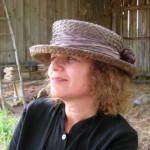
- SUBSCRIBE
- ALREADY SUBSCRIBED?
BECOME A BONJOUR PARIS MEMBER
Gain full access to our collection of over 5,000 articles and bring the City of Light into your life. Just 60 USD per year.
Find out why you should become a member here.
Sign in
Fill in your credentials below.
Hector Guimard is by far the best-known French Art Nouveau architect, whose work is easily recognized among other masters of the style. His signature work, the Paris Métro entrances, are classic examples of Art Nouveau, characterized by their elegant flowing lines, floral ornamentation, sacred geometric forms, and mythical symbolism. From the 1880s to World War I, Art Nouveau flourished in opposition to the rapid social and technological changes overtaking the world, introducing a new approach to the arts, free of the repetitive historicism that dominated much of 19th-century architecture, art and design.
Hector-Germain Guimard was born in Lyon in March 1867. His father was an orthopedist originally from Toucy, his mother a seamstress from Larajasse. He left home home at age 13 and found refuge under the roof of Apollonie Grivellé in the suburban 16th arrondissement of Paris. Showing artistic aptitude, Guimard was encouraged to attend the École Nationale Supérieure des Arts Décoratifs in Paris, the national school for decorative arts, which he did two years later. Charles Genuys, head architect for Historic Monuments, and Eugene Train, municipal architect for the city of Paris, and the decorative artist, Victor-Marie-Charles Ruprich-Robert, were among his teachers. They introduced Guimard to the study of nature and the close relationship between decoration and structure. Genuys and Ruprich-Robert were both disciples of Eugène-Emmanuel Viollet-le-Duc, the first chief architect of Paris’s Historic Monuments.

Photograph taken of Hector Guimard in 1907. (Smithsonian Institution – Cooper-Hewitt Smithsonian Design Museum). Photo © Wikipedia, public domain
Viollet-le-Duc was in charge of restoring many medieval buildings that had either been damaged or fallen into disrepair over previous centuries. Sometimes he over-restored them to an idealized state which, in his mind, looked much better than the originals, among these such as Notre-Dame de Paris, and the medieval citadel of Carcassonne. He greatly admired the Gothic use of vaulted construction and dreamed about using the modern material of iron (first used in European construction in 1789), to achieve similar results. It was due to this lineage of teaching from Viollet-le-Duc, Genuys and Ruprich-Robert that Guimard developed his own love of exposed structure. Ruprich-Robert also taught Guimard the rudiments of art history, archaeology and botany.
In 1884 Guimard’s designs were awarded two silver and three bronze medals. The following year, he placed in every competition he entered, winning four bronze medals, five silver, and the school’s most prestigious award, the Prix Jay (the Grand Prix d’Architecture). He then enrolled in the architecture section of the École Nationale des Beaux-Arts, then the foremost architecture school in the world. Participating in a much more competitive environment than in his previous school, Guimard’s brilliance did not shine through quite as clearly. Nevertheless, he made friends with many of his fellow students, including Henri Sauvage (1873-1932), an architect and decorator who, like Guimard, would become one of the pioneers of Art Nouveau.
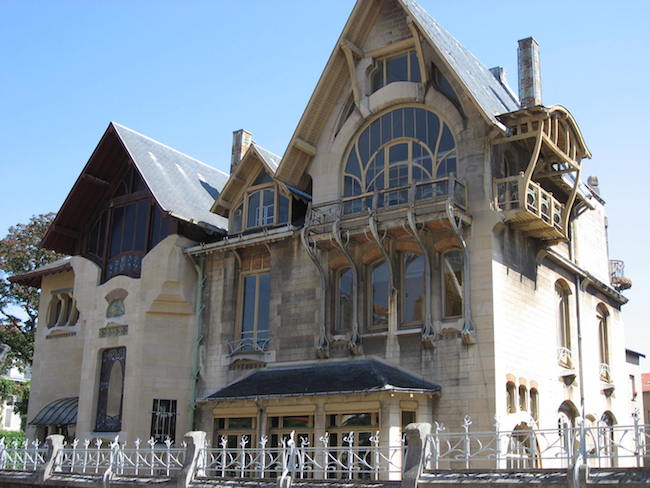
Villa Majorelle (1898) in Nancy by architect: Henri Sauvage. Photo © Liné1, Wikipedia (CC BY-SA 3.0)
Guimard won a travel scholarship in 1884, enabling him to go to England. There he toured the workshops of the Arts and Crafts movement, led by the eclectic designer William Morris. Arts and Crafts style was a direct response to the growing industrialization in Europe and the rise of factory mass production at the expense of traditional craftsmanship. Morris insisted that art should be integrated with the everyday, and artists should produce beautiful objects to elevate people’s lives.
Guimard paid particular attention to the works of the British illustrator and engraver Aubrey Beardsley. (An exhibit dedicated to Beardsley opened in October at the Musée d’Orsay, before temporarily closing because of the pandemic.) Beardsley’s designs depended heavily on the expressive quality of the organic line. Both Morris and Beardsley influenced Guimard’s developing style and the Art Nouveau movement in its entirety.
Guimard began independent practice in 1888, with a small commission for an outdoor café and stage at the quai d’Auteuil on the banks of the Seine. The following year he was given the job of constructing the Palace of Electricity, at the Exposition Universelle in Paris, but the star of the moment was Gustave Eiffel and his tower. To make ends meet, in 1891 he became a Professor of Drawing for the women’s section at his alma mater, the École des Arts Décoratifs. He remained a professor there until 1900. Despite the fact that most of his students were female, he remained a bachelor for the next 17 years.
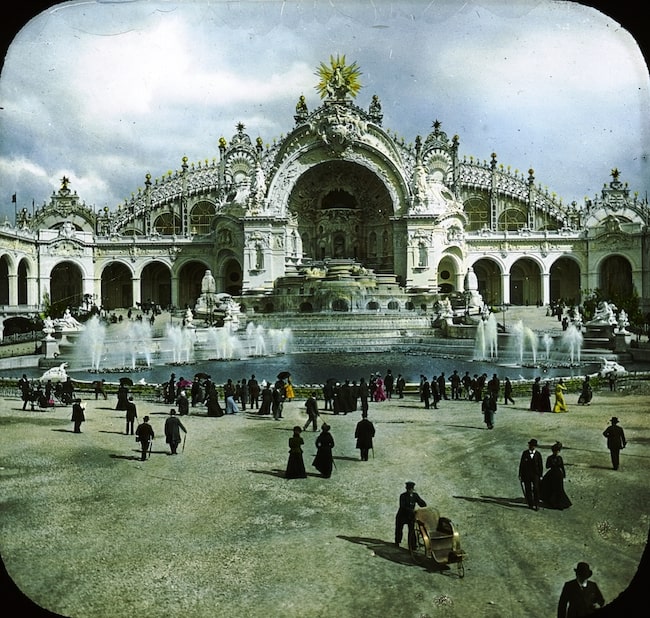
The Palace of Electricity (behind) and the Water Castle (in front), of 1900. Photo © Brooklyn Museum, Wikipedia (no restrictions on usage)
Guimard met the Belgian architect Paul Hankar in Brussels in 1894. Hankar had recently completed his own townhouse, one of the first examples of Art Nouveau in the city. The following year, he traveled back to Brussels and met the architect Victor Horta, for whom he developed a great admiration after visiting Horta’s astonishingly beautiful Hotel Tassel. Completed two years earlier, this sensual hotel is considered the first Art Nouveau building in the world.
The term “Art Nouveau,” the New Art, was actually coined in Belgium by the periodical L’Art Moderne to describe the work of the artist group Les Vingt (the 20), a group of reform-minded sculptors, designers and painters.
Guimard’s best known works were constructed between the years 1895 and 1905. He designed and built schools, funerary monuments, apartments and town houses, vacation homes and country villas, a concert hall, ceramics factories, artists’ studios, and exposition pavilions. He designed his iconic train station entrances for the Exposition Universelle of 1900, after being commissioned by Adrien Bernard, president of the French Metro. His mass-produced, metal Métro entrance designs, with their flowing lines and floral shapes, initially shocked Parisians, who thought his use of iron much too Teutonic. As a result, only 86 of 167 such entrances are still in existence; many of them, including most of the large installations, were later demolished. At the time Guimard was commissioned to design what would become the most recognizable subway station entrances in the world, Paris was only the second city after London to have constructed underground railways.
Guimard’s remarkable career path was solidified after he was asked to design several single-family houses and large apartment buildings in the neighborhood of the 16th arrondissement of Paris, which was rapidly developing into a fashionable suburban district. He relied upon a small circle of artistically adventurous, wealthy people including Anne-Elisabeth Fournier, an upper-class widow who awarded Guimard the commission to build a residential complex with 36 luxury apartments on the rue de la Fontaine, called Castel Béranger. The exterior structure was embellished by the highly innovative blending of materials, such as hammered iron, brick, stone and ceramics, while refined naturalistic decoration filled the interior. The Castel Béranger building, one of the first Art Noveau edifices outside Belgium, garnered Guimard great attention, and numerous commissions. He was so pleased with the result that he moved into one of the apartments himself, and even relocated his studio there. Paris was now his oyster.
Like William Morris, Guimard was also a social activist. He joined the new Ligue des Droits de l’Homme (League of the Rights of Man), an organization that fought against injustice, soon after it was founded in 1898. Like its members Emile Gallé (1846-1904), a French glassmaker, ceramicist and furniture designer; and Victor Prouvé (1858-1943), a painter, sculptor and engraver of the École de Nancy, Guimard became a supporter of Alfred Dreyfus and the campaign to overturn the disgraced Captain’s wrongful conviction. After World War I broke out, Guimard presciently published a few pamphlets arguing for the disarmament of nations and the establishment of an international body in Europe that would prevent armed conflict, a forerunner to the League of Nations.
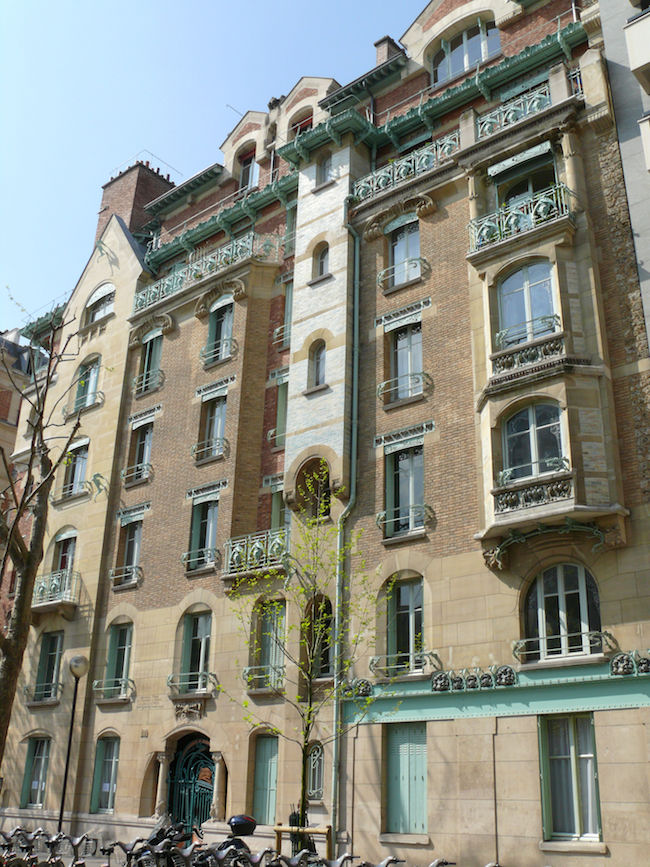
Castel Beranger, the first Art Nouveau apartment building in Paris. Photo © MOSSOT, Wikipedia (CC BY 1.0)
Following the next Exposition Universelle in Paris (1900), Art Nouveau achieved worldwide appeal, spreading across Europe, and as far as the United States and Australia, under the names: Jugendstil (Germany), Stile Liberty (Italy), Sezessionstil (Austria) and Tiffany style (America). Some of its more prominent advocates were the Scottish architect and designer Charles Rennie Mackintosh, the Belgian architect Henry van de Velde, the Austrian artist Gustav Klimt, the French furniture and ironwork designer Louis Majorelle, the Czechoslovakian graphic designer-artist Alphonse Mucha, the French glass and jewelry designer René Lalique, the American architect Louis Sullivan, and the Spanish architect and sculptor Antonio Gaudí.
In 1909, Guimard married the American painter Adeline Oppenheim, who lived and trained in France during the previous decade. His wedding present to her was the luxury house he designed at 122 avenue Mozart in the 16th arrondissement, known today as Hotel Guimard. Constructed on a narrow, triangular plot, its exterior load-bearing walls were purposefully built not to support any great weight, because its interior rooms were cleverly designed to minimize structural stress, thus keeping the exterior aesthetic intact. He designed most of the interior objects and fixtures himself, including numerous Art Nouveau fabrics, as well as a number of unique items of furniture. In fact, for most of his buildings, Guimard created a wide range of decorative designs in stained glass, ceramic panels, wrought iron fixtures, and floral wallpaper. The house was a private mansion whose interiors did not retain the full range of his designs, most notably the original furniture, which the Guimards took with them when they moved to New York in 1938. Adeline later donated the dining room suite and interior wall paneling to the city of Paris in the 1940s. It is currently on exhibit at the Petit Palais on avenue Winston-Churchill.
During World War I, when building activity came to a standstill, Guimard and his wife left Paris, living in Candes-Saint-Martin in the Loire, and Pau in the Pyrénées-Atlantique, as far from the conflict as they could be.
Between 1926 and 1930 Guimard built several residential buildings in the same neighborhood as his home in the 16th arrondissement, which still exist. These include the Hôtel Houyvet, situated at 2 Villa Flore and 120 Avenue Mozart, built for the industrialist Michel Antoine Paul Houyhvet. His last recorded work was La Guimardière, an apartment building on Avenue Le Nôtre, Vaucresson in the Hauts-de-Seine suburb of Paris. It was completed in 1930, and demolished in March-April 1969. Ten years later, with another war on the horizon, Guimard and his wife emigrated to New York, where he died, largely forgotten, in 1942. He is buried at the Gate of the Heavenly Cemetery in Hawthorne, New York.
After World War II ended, Adeline, who outlived her husband by 23 years, returned to France. She tried to convince French officials to create a museum dedicated to her husband’s legacy, but was unsuccessful. Thereafter, she donated much of Guimard’s extant drawings, correspondence, and other archival materials to the Museum of Modern Art in New York and the New York Public Library, where they still reside.
In the 1960s, major Guimard exhibitions were organized by the Museum of Modern Art in New York (1959) and at the Musée National d’Art Moderne (1960), In 1992, commemorating the 125th anniversary of his birth, the Musée d’Orsay devoted a large show solely to him.
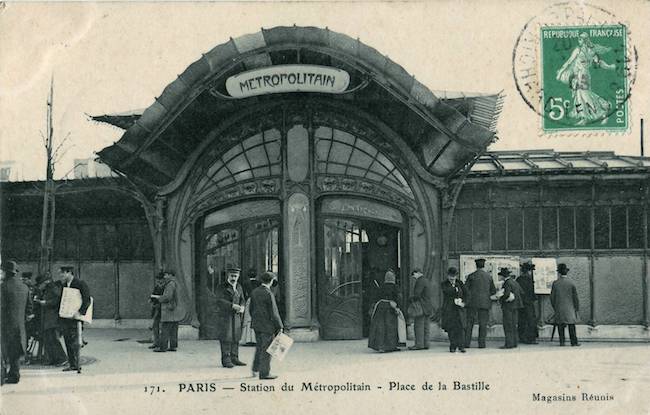
Bastille métro pavilion entrance (demolished in 1962). Photo © Scanné par Claude_Villetaneuse, Wikipedia. Public domain
Many of Guimard’s buildings have now been classified as historic monuments. Over the last half of the 20th century several replicas of Guimard’s original Métro entrances were given to various cities around the world. The most notable are in Montréal, given in 1967, and in Mexico City, gifted in 1968, when each of those cities opened subway systems. Additionally, several Guimard Métro entrances can be found in major museums with large collections of decorative arts, including the Museum of Modern Art in New York, the National Gallery of Art in Washington, and the Toledo Museum of Art in Ohio. A street in the 19th arrondissement of Paris has been named the rue Hector-Guimard since 1984. And online, a society known as Le Cercle Guimard, made up mostly of Art Nouveau enthusiasts in France, actively promotes his legacy.
Other notable works of architecture by Guimard include the Coilliot House in Lille (1898), La Bluette and La Sapinière in Hermanville-sur-Mer (1898), Castel Henriette in Sévres (1899), Humbert de Romans auditorium (1902, now destroyed), Nozal Hotel and Castel d’Orgeval in Paris (1905) and the Agoudas Hakehilos Synagogue (1913) in the Marais district of Paris.
As a former architect and designer, I have always been fascinated by Art Nouveau style, collecting a few pieces over the years. To me Paris wouldn’t be the same without Hector Guimard’s Métro entrances beckoning me to another world.
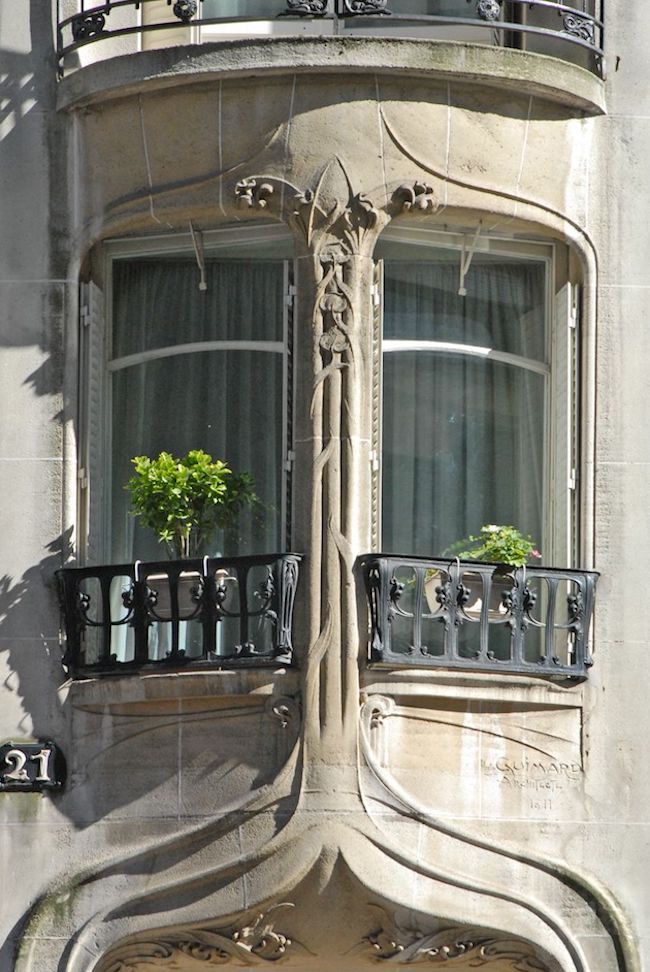
Detail of windows from the Rue de la Fontain apartments (1911). Photo © Jean-Pierre Dalbéra, Wikipedia (CC BY 2.0)
Lead photo credit : Gate of Castel Béranger. Photo © leKorbo.be, Flickr (CC BY-SA 2.0)
More in architecture, Art Nouveau, monuments

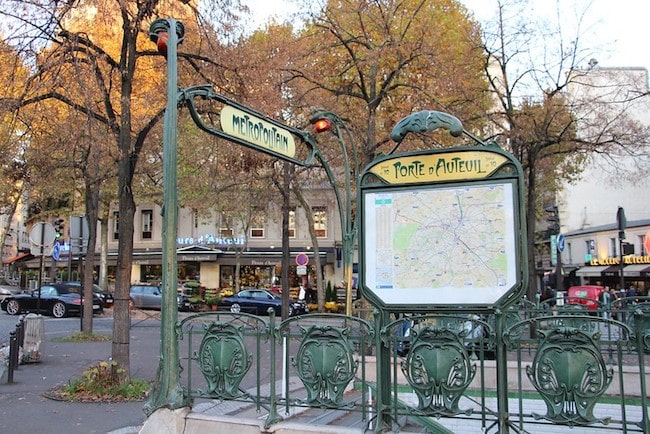


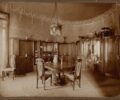
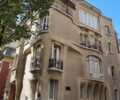



REPLY
REPLY